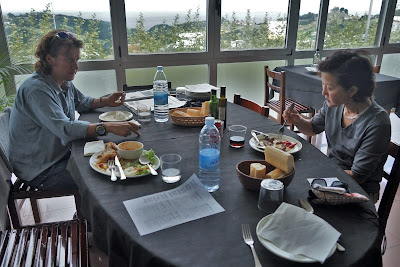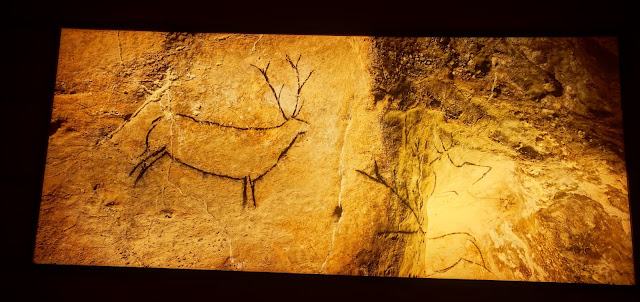I am grateful - and relieved - that despite some temporary setbacks (a bout of gastroenteritis, a kidney stone attack, and the wife's close call with an eye infection), we finished what we set out to do.
We have only walked less than a third of Camino del Norte but got a good taste of what it offers. The route is as scenic as expected. The terrain is as varied and difficult as rumored - only a very generous itinerary made it possible for us to stick to the schedule. I think it takes a hardy soul and well-prepared body to follow the official stages day after day. A veteran of the Camino Frances will find this route an optimal challenge. But people here including the first time Camino walkers seemed in general well prepared for a long walk. Overall, we ran into even a smaller number of pilgrims than we anticipated, and maybe because of the lack of a critical mass, we did not witness on this route the camaraderie that instantly develops on the Camino Frances. Maybe it is different inside the albergues and in the peak season.
On the culinary part of this pilgrimage, it was an immense privilege to visit the gastronomic temples of the region in a short period: Mugaritz, Arzak, Azurmendi and Martin Berasategui. Including the fine Nerua, it is a group currently ranked No. 6, 17, 19, 61 and 68 in the world. Add a memorable meal at the seafood grill heaven of Elkano. And to think that we almost went to Asador Etxebarri and Akelarre if we had more time. This is a testament to the amazingly high density of top restaurants in Basque Country.
Fittingly, on the flight back to the States, I find two documentaries to watch: one following six pilgrims on the Camino Frances and the other featuring five jet-setting food bloggers.
With any luck, I shall return!
Here are snapshots of people with whom we have had some level of interactions on this trip. Interestingly, they are not predominantly pilgrims like it was on the Camino Frances.

























































